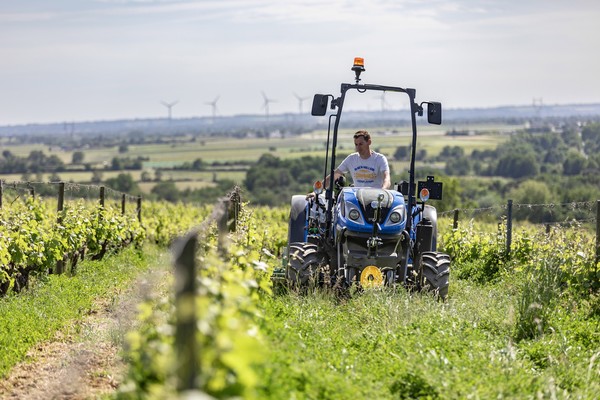
NRRP and innovation: the "worksite" of new funds
With two different decrees signed in August by the MASAF, the first using NRRP resources and the second the Innovation Fund, the modernisation of the machinery fleet of SMEs operating in the agricultural and forestry sector is being promoted. FederUnacoma: two important measures with an ongoing process
In August, within the space of a few hours, two important decrees were signed by the Ministry of Agriculture of Food Sovereignty and Forests (MASAF) to support the modernisation process of the Italian primary sector towards a 4.0 agriculture. The intention is to foster the sustainability of production cycles and the increase of production through the use of innovative technologies in step with the times.
These are two separate measures, but they are very similar, both in terms of their aims and the sphere of eligible expenditure where mechanisation plays a major role. In chronological order, the Ministry's decree of 8 August 2023 allocates EUR 400 million to be disbursed through calls for tenders by regional administrations, which will draw from the NRRP for the sub-measure "modernisation of agricultural machinery" (Mission 2, Component 1, Investment 2.3 - Innovation and mechanisation in the agricultural and food sector). As can be seen from the division of funds among the 20 Italian regions and autonomous provinces, the largest budget is allocated to Apulia (more than 47.6 million) and the smallest to Valle d'Aosta (just over 1.6 million) in relation to UAA sizes and innovation targets. Public capital support for farms varies between EUR 35 and 70 thousand for a rate of 65% of the eligible investment cost, rising to 80% for young farmers.
The other decree (9 August 2023), which also involves the Ministry of Economy and Finance, establishes the disbursement, over a three-year period (2023-2025), of EUR 225 million in non-repayable funds with reference to a specific measure contained in the Budget Law 2023.
In this case, small and medium-sized farms will be able to access the contribution by investing in innovation projects ranging from a minimum of EUR 70,000 to a maximum of EUR 500,000 with a maximum contribution percentage that varies depending on the amount and type of business.
The annual budget allocated for this type of incentive amounts to EUR 75 million for a three-year period and includes a specific provision of resources for the regions affected by the recent floods.
In this case, interested SMEs will have to submit their applications to ISMEA (Institute of Agricultural Food Market Services), which will soon provide the necessary forms through its online portal.
In both cases, the aforementioned decrees (when this article has been written they haven’t yet been published in the Official Gazette) present some passages that are not easy to interpret for operators in the sector. Certainly agricultural SMEs - which under Article 1 of Legislative Decree 228 of 18 May 2001 also include those operating in the forestry sector - will be able to access the contribution by purchasing new machinery (machines, equipment and tools) with specific characteristics. In particular, explicit reference is made to evolved forms of digital systems associated with the machinery, such as ISOBUS, interconnection to transmit data output, remote monitoring, automatic or semi-automatic guidance, etc. In addition, the purchase of tractors and zero-emission agricultural or livestock machines is covered. The two measures are of great importance in supporting the process of innovation in agriculture and updating the agro-mechanical fleet - comments the Federation of Agricultural Machinery Manufacturers FederUnacoma - but some respects an activity in progress. Beyond the formal step of publication in the Official Gazette, the measures need to be specified in terms of application methods. The NRRP, in particular, still looks complex in its process, considering the transfer to the Regions and the timing of the final allocation of the funds requested and those to be reallocated. The Federation of Manufacturers is in constant contact with the Ministry - FederUnacoma points out - to help make access to the new resources faster and more efficient.








